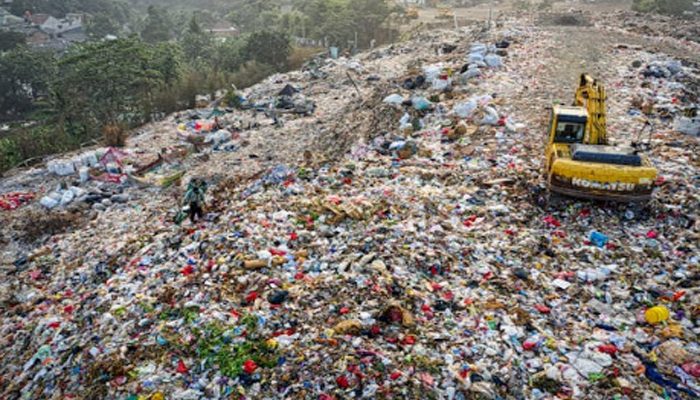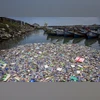
By Sahil Sharma: India has emerged as the world’s largest plastic polluter, contributing nearly 20% of global plastic emissions, according to a recent study published in Nature by researchers from the University of Leeds. This new global analysis reveals that India’s plastic pollution is significantly higher than that of other nations, including Nigeria, Indonesia, and China. Annually, India burns approximately 5.8 million tonnes of plastic and releases an additional 3.5 million tonnes as waste into the environment, affecting land, air, and water. This brings India’s total contribution to 9.3 million tonnes of plastic pollution each year. This figure, according to experts, might still be an underestimate.
Watch The Full Explainer Here:
The study highlights a critical issue: India’s inadequate waste management infrastructure. Apart from attempts at regulation, policies remain scattered and challenging to enforce. For comparison, coordinated efforts by China have reduced its plastic emissions significantly. Currently, China is responsible for 2.8 million tonnes of plastic waste emissions.
)
Globally researchers estimate that around 251 million tonnes of plastic waste are generated annually—enough to fill about 200,000 Olympic-sized swimming pools. Of this, about 52.1 million tonnes end up as ‘unmanaged’ waste, which is either released into the environment or burned in open fires. This unmanaged waste is a significant problem, contributing to severe environmental pollution and health risks due to the release of harmful particulates and gases. The study also underscores a disparity between the Global North and South in handling plastic pollution. Southern Asia, Sub-Saharan Africa, and Southeast Asia are the highest contributors to plastic waste emissions.
Notably, 69% of global plastic pollution comes from 20 countries in the Global South, which do not fall into the High-Income Country (HIC) category as defined by the World Bank. These countries face challenges such as inadequate waste management systems and prevalent open burning of waste. In contrast, High-Income Countries, primarily in the Global North, manage to avoid appearing in the top 90 polluters due to their robust waste collection and controlled disposal systems. While these countries produce more plastic waste, their effective management practices mitigate environmental impact.
India’s policies related to plastic waste are still developing. The enforcement of regulations, such as the 2022 ban on 19 categories of single-use plastics, remains inconsistent. Penalties for violations, ranging from 200 rupees (about US$2.40) for local vendors to 10,000 rupees for larger businesses, are rarely enforced. Experts argue that addressing the plastic crisis requires a focused approach. Enhanced scrutiny of polluting sectors and industry-specific policies could be part of the solution.
Reports indicate that a small fraction of plastic waste in India is recycled, with the rest contributing to environmental damage. The expansion of oil refineries and petrochemical plants in India, which produce plastics from fossil fuels, is a major source of the pollution crisis. With 21 petrochemical plants across 13 states and more planned expansions, the plastic industry’s lack of transparency in emission and production figures exacerbates the problem.
To combat the crisis, targeted policy initiatives are crucial. These might include removing subsidies for plastic manufacturers, conducting baseline health surveys near new petrochemical plants, and carrying out epidemiological studies of populations living around high-pollution areas. Immediate and effective actions are essential to address India’s burgeoning plastic pollution crisis and to prevent further environmental damage.
